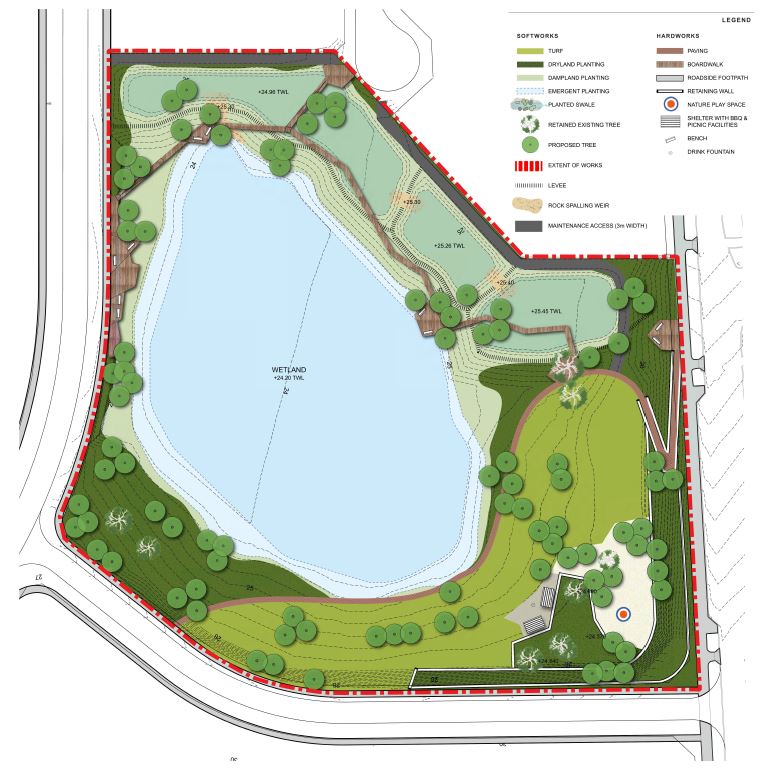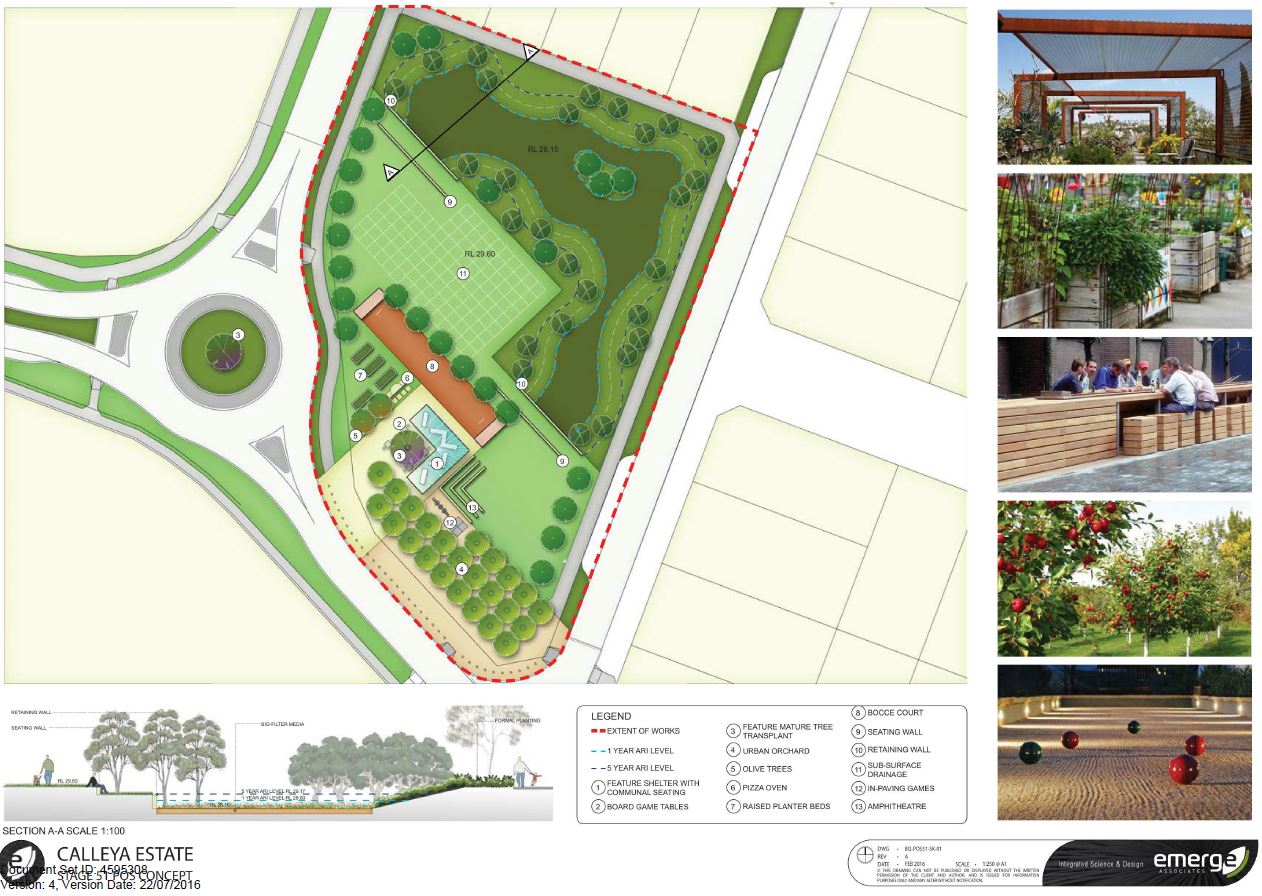
Project Details
Runoff during frequent rainfall events from the Cockburn Central East development will be captured and treated in biofiltration swales to be installed adjacent to the wetland.
WSUD Category: Biofilter/raingarden, Detention Basin, Stormwater management in multi-dwelling developments, Swale / buffer strip, Tree pits
| Criteria | Information |
|---|---|
| Development Type: | Public Open Space |
| Function/Driver: | Water quantity/flood |
| Government Area: | City of Cockburn |
| Site Context: | Shallow groundwater |
| Year Completed: | 2019 |
The City of Cockburn implements WSUD and structural BMP treatment trains for pre-treatment of stormwater prior to discharge to Atwell Drain. Flows for events up to 1 year 1 hour ARI will be infiltrated in the bioretention areas within POS areas. 5 year flows from the subdivision will be conveyed into bioretention areas via a conventional pipe network in the road reserves which will overflow through risers into the main infiltration basins. A 100 year overland flow path will be designed to direct flows toward infiltration basins in the POS. A freeboard of 0.3 m will be provided between the peak 100 year ARI flood level and house/building pad levels.
The City of Cockburn implements the followings in the detailed WSUD design:
- Lot Runoff:
lot soakwells are designed to retain 1 in 20 year storm of 5 minutes duration based on the requirements for gutter and downpipe sizing by Building Codes of Australia. - Stormwater Drainage Design:
The pit and pipe system will be treated with GPTs prior to discharge via bubble up pits to bioretention areas overtopping to the main basin or underground storage cells for events in excess of the 1 year 1 hour ARI. - Underground Storage Cells:
The below ground storage is designed as an infiltration gallery, providing usable, turfed POS areas above storage cells, underlain with a gravel bed to encourage infiltration. - Biofilter Media:
Biofiltration media is required in a 300mm layer beneath bioretention basins. This media should be sand rather than loam, with permeability of 100-300mm/hr. The media should be well graded and contain < 3% fines. - Biofilter planting:
. Ground covers, sedges, reeds and small shrubs, not large shrubs or trees
. Able to survive periods of inundation and periods of drought
. Not requiring application of fertiliser, nor sensitive to high levels of nutrients
. Tolerant of high pH (alkaline) soils
. Not nitrogen fixing plants
. Deter entry into planted areas (eg with prickles or spikes)
. Fast growing
. Native to Western Australia - Biofilter Maintenance:
Monitoring and maintenance of biolfilters is critical to their operation. It is recommended that basin forebays be inspected during and shortly after construction, as well as following major rainfall events until established.

